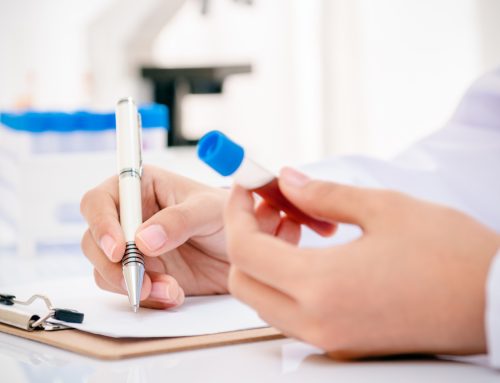Dr Kishor Tewary, Consultant Paediatrician
MD; MRCP; FRCPCH; PGCME; PGCHS
What is hydronephrosis?
Hydronephrosis: ‘Hydro’ stands for Water, ‘Nephron’ stands for Kidney cells. We all have a water bag in kidney (pelvis) where filtered urine collects before being drained towards bladder.
Hydronephrosis stands for ‘excessive water/urine collection in Kidneys’.
For a new born and infant, the antero-posterior diameter (APD) size of the pelvis up to 7 mm is accepted as normal, in older infants and children 10 mm is accepted. If the APD size exceeds this measurement, this is called ‘Hydronephrosis’.
Around 1% of pregnancies can have ‘antenatal hydronephrosis’. This is usually not serious and most hydronephrosis resolve in few months after birth, however a small number of babies may need acute or long term management and monitoring.
In general, APD >10 mm in the second trimester is associated with an increased risk for congenital anomalies of kidney and the urinary tract. Fetuses with APD >15 mm during the third trimester are at the greatest risk for this.
What causes hydronephrosis?
It is either caused by a refluxing ureter (the kidney tube which meets bladder refluxes urine back during voiding due to impaired flap valve mechanism), or
Obstruction (partial/complete) in the outflow tract (a kink at the junction of the
Tube with pelvis of kidney pelvis ie PUJ, or the bladder ie VUJ, ie an obstruction at the bladder outlet).
What are the symptoms of a blocked kidney/blocked bladder outlet?
It is usually asymptomatic and only picked up at routine antenatal scan, or an incidental finding later on.
Occasionally, it can be picked up during routine investigations for a urinary tract infection.
Very occasionally it can present as a unilateral/bilateral abdominal lump, and pain.
A block at the bladder outlet (PUJ/VUJ) can present as a weak stream of urine, or swelling in the lower abdomen below the belly button. The swelling is because of a full bladder which is unable to drain out.
How is it diagnosed?
Usually it is diagnosed during the antenatal ultrasound scans from 20 weeks onwards. Sometimes it can be picked up during investigations after birth for a urinary tract infection.
A kidney and bladder ultrasound is good enough to diagnose hydronephrosis. However in selected cases, Doctors may ask for a further investigation called ‘Micturating Cysto-uretehrogram (MCUG)’. This is a special x-ray perform with a radiopaque dye giving the outline of the bladder, kidneys and the connecting tubes. Any blockage in the urinary flow tract or reflux of the dye towards the kidneys is picked up on the x-ray.
In older children more than three years of age, a radio nucleotide scan called MAG3 Renogram is performed instead of MCUG. The radioactive dye injected through a small vein of the child travels through the kidneys to the bladder, and a Gamma camera picks up this movement suggesting any reflux of urine or any blockage. This test can also show a scar in the kidney, which can be an indirect evidence of the urinary reflux into the kidneys.
Another test sometimes performed is Dimercaptosuccinic acid (DMSA). This is again a radio nuclear dye injected through a small vein towards the kidneys. This dye stays in the kidneys rather than getting excreted like MAG3. DMSA is more sensitive for picking up a kidney scar, suggesting an indirect evidence of a refluxing ureter. However this test cannot show a direct reflux.
How do clinician’s treat hydronephrosis?
The treatment depends on the cause of hydronephrosis. This is established by imaging including an ultrasound of kidneys, and /or special x-rays with dye showing excretion of urine into outflow tract.
For a refluxing ureter (VUR)
For mild to moderate reflux: child may be kept on night time low dose antibiotics till the age of achieving full bladder continence. A large number of studies have shown that this not only prevents a urinary tract infection (which can cause kidney scarring in presence of reflux), but also let the child achieve a full bladder control. The studies show that VUR improves in majority of children by this age. Children with very mild reflux often grow out of it by five years of age, and often the intensity of reflux goes down with age due to the improvement in the bladder capacity, and straightening of the ureters.
For severe reflux: surgeons recommend a ‘Ureteric re-implantation’. This involves repositioning the Ureter (kidney tube) in to the bladder at a deeper level making a better flap valve mechanism. The antibiotics may not be strong enough in these cases to prevent the damage. The baby may need an initial catheter being put into the bladder, through the urinary passage, or through a small cut in the lower abdomen till a re-implantation is performed.
The newer techniques involves injection of a spongy material at the insertion of the ureter into bladder through an endoscope (Endoscopic management), this improves the flap valve mechanism and thus prevents reflux.
A partial PUJ obstruction improves with age in majority of cases. However this needs to be monitored till fully resolved.
A complete obstruction at PUJ, VUJ or bladder outlet needs surgical management.
Prognosis:
While most of the antenatal mild to moderate hydronephrosis resolves to a large extent by the age 5, persisting and severe hydronephrosis may increase the chances of recurrent urinary tract infections, and damage to the kidneys due to the pressure of the urinary reflux. A moderately severe or severe hydronephrosis hence needs a further urological intervention. This group of children are monitored frequently for at least a few years after the intervention.
References
- Lee RS et al. Antenatal Hydronephrosis as a Predictor of Postnatal Outcome: A meta-analysis. Pediatr (2006)118:586-593
- A.Duncan. Antenatal renal pelvic dilation: the long-term outlook. Clinical Radiology (2007) 62, 134-139
- Pennesi et al. Is Antibiotic Prophylaxis in Children with VUR Effective in Preventing Pyelonephritis and Renal Scars? A Randomised Controlled Trial. Pediatr (2008)121,6:e1489-e1494
- Woodward M, Frank D. Postnatal management of antenatal hydronephrosis. BJU Int 2002; 89:149.



